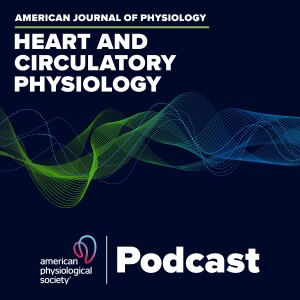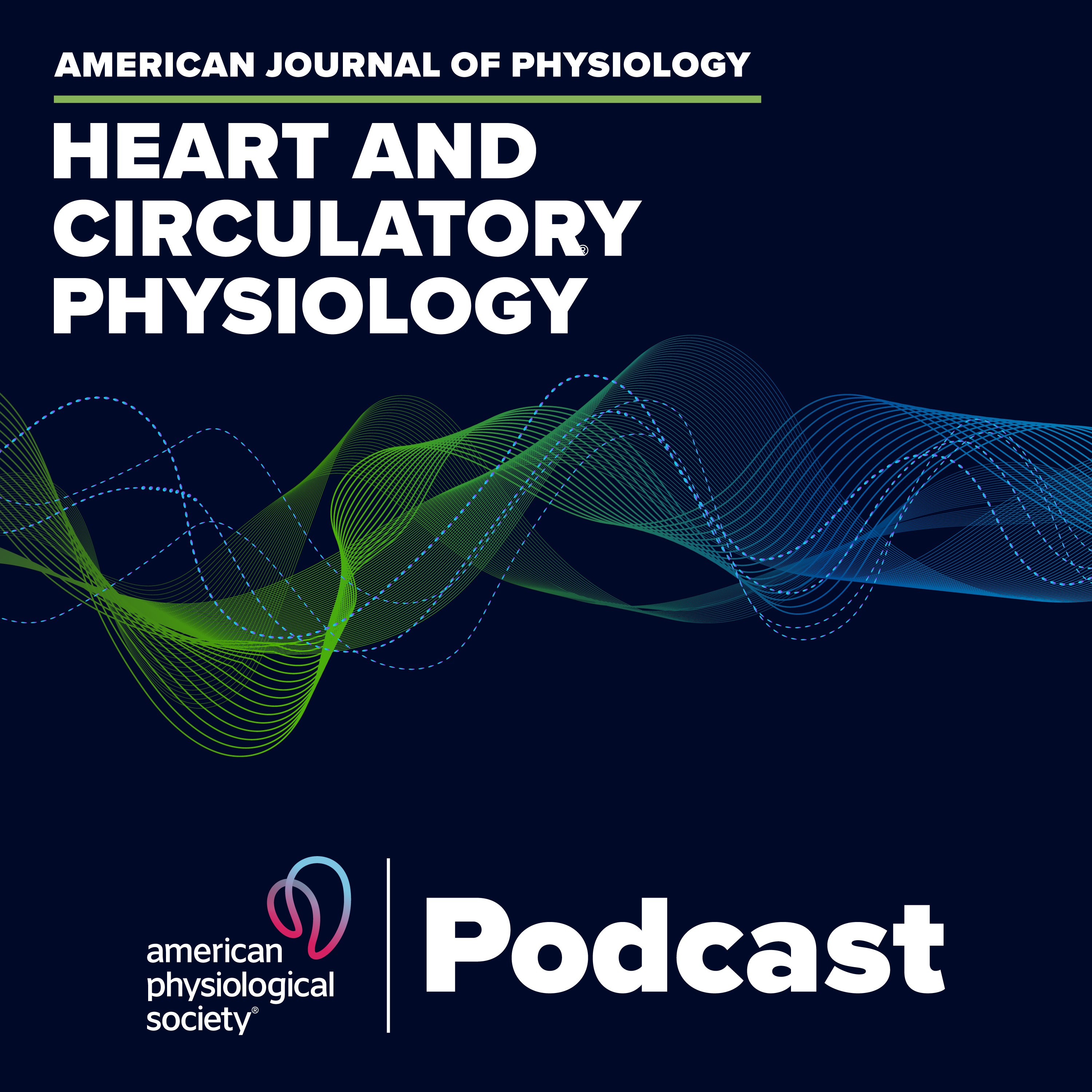Episodes

Monday Feb 06, 2012
Molecular mechanisms linking salt to hypertension
Monday Feb 06, 2012
Monday Feb 06, 2012
It is well known that there is no single cause of hypertension, but many of the factors that contribute to hypertension are known. Our latest podcast spotlights an elegant new Review article by Blaustein and colleagues which focuses on the interplay of salt and the secretion and action of endogenous ouabain. Associate Editor Irving Zucker interviews senior author, and fellow Associate Editor, Mordecai Blaustein (University of Maryland), along with leading expert John Osborn (University of Minnesota) about how endogenous ouabain might contribute to salt-sensitive hypertension and plays a central role in the alterations in the central nervous system, kidney and vasculature which contribute to chronic hypertension.
Mordecai P. Blaustein, Frans HH Leenen, Ling Chen, Vera A. Golovina, John M Hamlyn, Thomas L Pallone, James W. Van Huysse, Jin Zhang, Withrow Gil Wier. How NaCl raises blood pressure: A new paradigm for the pathogenesis of salt-dependent hypertension Am J Physiol Heart Circ Physiol, published ahead of print November 4, 2011, doi:10.1152/ajpheart.00899.2011.

Thursday Feb 02, 2012
BH4 and Vascular Function in Women
Thursday Feb 02, 2012
Thursday Feb 02, 2012
What's the problem with arterial function following menopause? Listen as Editor in Chief William Stanley, senior author Kerrie Moreau (University of Colorado Denver), and leading women’s health expert Virginia Miller (Mayo Clinic) engage in a lively conversation about the latest clinical study by Moreau et al on the role of estrogen and uncoupled nitric oxide synthase in arterial stiffening in post-menopausal women. Can early intervention with estrogen combat accelerated vascular aging after menopause?
Kerrie L Moreau, Amie Meditz, Kevin Deane, Wendy M. Kohrt. Tetrahydrobiopterin Improves Endothelial Function and Decreases Arterial Stiffness in Estrogen-Deficient Postmenopausal Women Am J Physiol Heart Circ Physiol, published ahead of print January 13, 2012, doi:10.1152/ajpheart.01065.2011.

Wednesday Jan 18, 2012
Obesity and orthopedic trauma
Wednesday Jan 18, 2012
Wednesday Jan 18, 2012
The obesity epidemic in the United States shows no signs of abating, which is why our latest podcast is particularly insightful. Associate Editor Nancy Kanagy talks with author Lusha Xiang (University of Mississippi) and leading expert Jeff Frisbee (West Virginia University) about the study by Xiang and colleagues, which suggests the mechanism behind the poor prognosis for obese trauma victims and provides insight into a new therapeutic intervention to improve recovery of obese victims of traumatic injury.
Lusha Xiang, Silu Lu, William Fuller, Arun Aneja, George V Russell, Louis B Jones, and Robert L. Hester. Impaired blood pressure recovery to hemorrhage in obese Zucker rats with orthopedic trauma. Am J Physiol Heart Circ Physiol, published ahead of print October 14, 2011, doi: 10.1152/ajpheart.00439.2011.

Wednesday Jan 11, 2012
Muscle oxygen transport and utilization in heart failure
Wednesday Jan 11, 2012
Wednesday Jan 11, 2012
A well-known problem for heart failure patients is the inability, or markedly decreased ability, to exercise. When even low levels of daily activity are impaired, the quality of life for heart failure patients suffers considerably. The mechanisms for exercise intolerance are very complicated and extend far beyond impaired cardiac performance. Listen in as Associate Editor Irving Zucker, senior author David Poole (Kansas State University) and leading expert Peter Wagner (University of California, San Diego) discuss the new Review article by Poole and colleagues, which tackles the mechanisms of muscle dysfunction in heart failure at the oxygen transport and microcirculatory levels.
David C. Poole, Daniel M. Hirai, Steven W. Copp, and Timothy I. Musch. Muscle Oxygen Transport and Utilization in Heart Failure: Implications for Exercise (In)tolerance Am J Physiol Heart Circ Physiol, published ahead of print November 18, 2011, doi:10.1152/ajpheart.00943.2011.

Friday Jan 06, 2012
Friday Jan 06, 2012
What are the parameters which modulate conduction under normal and disease conditions in the heart? This age-old debate has pitted two distinct schools of thought against each other—ephaptic conduction vs. gap junctions. Can changes in interstitial volume by pharmacological means dramatically change conduction velocity? In our latest podcast on the article by Veeraraghavan et al, Associate Editor Igor Efimov, leading expert Craig Henriquez (Duke University) and senior author Steven Poelzing (University of Utah) wade into the debate.
Rengasayee Veeraraghavan, Mohamed E. Salama, and Steven Poelzing. Interstitial volume modulates the conduction velocity-gap junction relationship. Am J Physiol Heart Circ Physiol, published ahead of print October 21, 2011, doi: 10.1152/ajpheart.00868.2011.

Tuesday Dec 13, 2011
Mitofusin-1 Deficiency in the Heart
Tuesday Dec 13, 2011
Tuesday Dec 13, 2011
Our latest podcast focuses on mitochondrial dynamics, as senior author Ken Walsh (Boston University) and expert Elizabeth “Tish” Murphy (NHLBI) join Consulting Editor Michael Wolin to discuss the recent study by Papanicolau et al, showing surprising effects of cardiac deletion of the key mitochondrial membrane protein mitofusin-1. Listen in as we uncover the unexpected impact of mitofusin-1 and mitofusin-2 on mitochondrial size and resistance to stress.
Kyriakos N. Papanicolaou, Gladys A. Ngoh, Errine R Dabkowski, Kelly A O'Connell, Rogerio F. Ribeiro, William C. Stanley, and Kenneth Walsh. Cardiomyocyte deletion of mitofusin-1 leads to mitochondrial fragmentation and improves tolerance to ROS-induced mitochondrial dysfunction and cell death. Am J Physiol Heart Circ Physiol, published ahead of print October 28, 2011, doi: 10.1152/ajpheart.00833.2011.

Thursday Nov 17, 2011
SIRT3 and cardiac mitochondria
Thursday Nov 17, 2011
Thursday Nov 17, 2011
Post-translational modification through acetylation by the NAD+-dependent deacetylase sirtuin-3, or SIRT3, has recently emerged as a key player in regulating mitochondrial function. What is SIRT3 doing in cardiac mitochondria? How does it impact cardiac physiology and pathophysiology? Listen as Editor in Chief William Stanley and Associate Editor Junichi Sadoshima talk with the author Michael Sack (National Heart, Lung and Blood Institute, NIH) about his just-published Review article which tackles these very questions.
Michael N. Sack. Emerging characterization of the role of SIRT3 mediated mitochondrial protein deacetylation in the heart. Am J Physiol Heart Circ Physiol, published ahead of print October 7, 2011, doi:10.1152/ajpheart.00199.2011.

Wednesday Nov 09, 2011
Electrophysiology of hiPSC-derived cardiomyocytes
Wednesday Nov 09, 2011
Wednesday Nov 09, 2011
The discovery of induced pluripotent stem (iPS) cells has allowed researchers to generate human cardiomyocytes from patients. Why is this important? Human iPS cells are useful for studying normal and diseased human cardiomyocytes and for discovering new drug therapies to treat cardiovascular disease. Until now, methods for generating cardiomyocytes from human iPS or ES cells were inconsistent and often unreliable. The recent article by Ma et al presents a new method to obtain a large quantity of cultured cardiac myocytes using embryoid body formation and blasticidin selection techniques resulting in more than 98% purity from human iPS cell lines. Associate Editor Junichi Sadoshima talks with authors Craig January (University of Wisconsin – Madison) and Brad Swanson (Cellular Dynamics International), along with leading expert Diego Fraidenraich (University of Medicine and Dentistry, New Jersey), about this groundbreaking research and its many potential applications.
Junyi Ma, Liang Guo, Steve J Fiene, Blake D Anson, James A Thomson, Timothy J. Kamp, Kyle L Kolaja, Bradley J Swanson, and Craig T. January. High Purity Human Induced Pluripotent Stem Cell (hiPSC) Derived Cardiomyocytes: Electrophysiological Properties of Action Potentials and Ionic Currents. Am J Physiol Heart Circ Physiol, published ahead of print September 2, 2011, doi:10.1152/ajpheart.00694.2011.

Thursday Nov 03, 2011
Carotid baroreflex responsiveness is impaired in normotensive African American men
Thursday Nov 03, 2011
Thursday Nov 03, 2011
It almost goes without saying that human beings are genetically diverse and that diseases develop differently, and at different rates, across various racial groups in the human population. Case in point: African Americans are predisposed to developing far deadlier forms of hypertension earlier in life than other racial group counterparts. Associate Editor Irving Zucker talks with lead author David Keller (University of Texas Arlington) and expert Peter Raven (University of North Texas Health Science Center) about the work of Holwerda et al, which studied the possibility of the baroreflex contributing to the development of hypertension in African American males.
Seth W. Holwerda, Diana Fulton, Wendy L. Eubank, and David M. Keller. Carotid Baroreflex Responsiveness is Impaired in Normotensive African American Men. Am J Physiol Heart Circ Physiol, October 2011 301:H1639-H1645; published ahead of print August 12, 2011, doi:10.1152/ajpheart.00604.2011.

Thursday Oct 20, 2011
Shedding of the Glycocalyx and Capillary Hemodynamics
Thursday Oct 20, 2011
Thursday Oct 20, 2011
We know that the endothelial surface is coated with glycocalyx. But why should we be concerned about the effects of shedding the glycocalyx on microvascular hemodynamics? Editor in Chief William C. Stanley talks with senior author Herbert Lipowsky (Pennsylvania State University) and leading expert Jos A. Spaan (University of Amsterdam) about the unique model presented in the article by Lipowsky et al that mimics aspects of acute vascular inflammation and investigates how shedding of the glycocalyx impacts many pathologies including diabetes.
Herbert H. Lipowsky, Lujia Gao, and Anne Lescanic. Shedding of the Endothelial Glycocalyx in Arterioles, Capillaries and Venules and its Effect on Capillary Hemodynamics During Inflammation. Am J Physiol Heart Circ Physiol, published ahead of print September 16, 2011, doi:10.1152/ajpheart.00803.2011.

